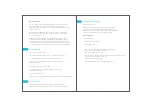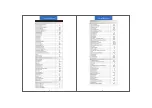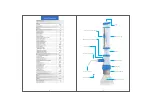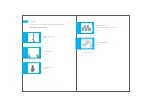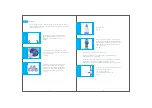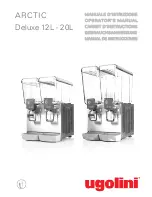
14
13
4.
5.
The instrument is all set up and ready to use.
Do not operate the piston until the entire unit is safely and fully
mounted on the reservoir bottle.
Always wear rubber gloves while operating the instrument or handling
the bottle, especially when working with hazardous liquids.
When mounted to a reagent bottle, always carry the instrument carefully.
Fig.
8.4
Fix the adapter.
(Fig. 8.4)
Fig.
8.5
Fig.
8.6
Mount the instrument. Screw it to the reservoir
by applying gentle hand torque applied to the
threaded platform base only. In case of removal,
apply the same technique to the base, in the
opposite direction.
(Fig. 8.5)
Do not press the piston down when the cap is on.
Avoid splashing the reagent.
The reagent can drip out
from the discharge tube and cap.
(Fig. 8.6)
Fig.
8.1
Setting Up
Wear protective clothing, protective gear for the eyes and hands. Follow all
safety instructions and observe limitations of use and operating constraints.
(Refer to sections - 2,3,4)
8.
1.
2.
3.
Fig.
8.2
Adjust the length of the telescopic tube to
fit your particular reservoir. If you require a
longer tube, it is provided on request.
(Fig. 8.1)
Fix the telescopic tube. The tube’s ends have
different diameters. Please select the correct side
for your instrument.
(Fig. 8.2)
Fig.
8.3
Choose the correct adapter for the bottle.
The threaded platform base has a 30 mm
screw thread. Five adapters are supplied to
suit containers with a 28, 32, 38, 40, 45 mm
and 30 mm (inbuilt adapter) screw neck.
(Fig. 8.3)




